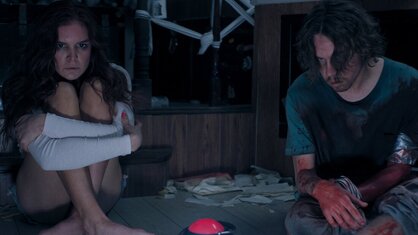 People do some pretty messed up stuff. That's just a fact. We screw each other over. We hurt each other. And in the most dire of situations, we're even pretty willing to kill each other. Harpoon, the latest film from writer/director Rob Grant, explores some of the worst of humanity... ...Out now on VOD, Harpoon is one every horror fan needs to check out (you can read my review here). This story follows an odd trio of friends, Jonah (Munro Chambers), Sasha (Emily Tyra) and Richard (Christopher Gray), headed out for a day trip on the sea. But when rage-ahol addicted Richard begins to suspect that his girlfriend Sasha and best friend, Jonah, may have slept together, his jealousy quickly turns an awkward trip into a desolate nightmare. Tense, violent, and shockingly funny, it's one of the stranger though enjoyable films of the year. I recently had the pleasure of sitting down with Rob Grant to discuss the film, one which, according to Grant, was very close to never being seen at all. Killer Horror Critic: It seems like mistrust amongst friends is a common theme in your work. What draws you to wanting to tell these kinds of stories? Rob Grant: Without going too deep into it, friendship and betrayal is such a strong element that I think a lot of people worry about it. I had a devastating relationship back in the day that I still feel like I’m recovering from now. Trust is such a fundamental, important element to communicating with other humans and I like that when it’s in moves. I like it when that’s broken because it automatically gives something very interesting that I want to see and play out and I don’t know if we have humans that have actually been able to figure out how to recover from that perhaps. People are often like oh you’re a really cynical person. I’m like no I like to think that I’m pretty empathetic because I want to know how these people ended up this way and how we either avoid that or fix that. KHC: I completely understand that. Art is all about exploring why some of us do the things we do. RG: Exactly. I’ve had a pretty privileged life, a pretty safe existence and its very enjoyable to explore the dark side of it. Like in Harpoon, these three people are stuck on a boat and I’ve often fantasied, how would I react? Would I be the hero in this survival situation or would I be so self-preserving that I’d be a real jerk about it? So, it’s fun to explore all those sides of human nature. KHC: What sparked your interest in this story initially, and what was writing with Mike Kovac like? RG: The initial idea came because we grew up in Vancouver, Canada, which is on the west coast, where in the summer its nice for three months out of the year. There’s lots of boating, and my friend had a boat and I always thought you know, if no one would give us money, I thought I could make a cheap, isolated horror movie, or a survival story on a boat because I feel like oh the cabin in the woods has been done to death. I just thought it’s like oh I can get a lot of value out of this boat if no one were to come on board with this movie, but then the problem is as soon as I get a premise I get excited, but I have to put it away because if I write without letting it fester and think about it I’ll get to page thirty and the script will just die. So, I’m sure I wrote the premise two or three years ago and then I just had to think about what I had to say about the nature of friendship, betrayal, survivalism, all of this stuff, and then finally when it came together, that’s when it turned into the script that it did. And Kovac, I’ve worked very closely with him on prior movies. He’s been a big influential part. Every cut of a movie, I’ll show him, and he’ll give feedback and notes and then what happened was on this one, we were sending the movie out to festivals and we got no’s from everyone. We were very close to this movie never being seen by anyone. And then Robert on Boxing Day called us and said hey, we want your premiere in three weeks in January. We hadn’t even finished the narration yet, and that’s when Mike came on board and basically me and him in a room over four days kept rerecording and redoing the narration until it felt right and testing it with mini audiences like friends and stuff before we got Brett Gelman. We recorded Brett Gelman’s voice four days before the premiere. I flew down to LA, recorded him, flew back the same day, edited it on the flight home, and we didn’t even get to test it before we screened it. Mike came on in the eleventh hour, like all the narration, cause it originally used to be much different. It was much more on the nose about the themes and Mike came on board and say no, no, no, you don’t need to spell this out, make this more about this and we kind of just went back and forth and that’s where Mike was invaluable in that aspect. KHC: I like how the narration ended up having a Hitchhiker’s Guide to the Galaxy vibe. Have you gotten that at all? RG: A few people have said that. I haven’t seen Hitchhiker’s Guide yet. I apologize because I know there’s a massive following for that. We went through so many variations of that narration where at first it was much more cynical and much more native towards these people, and then we learned through test screenings, if the narrator’s being judgmental, so is the audience, and it kind of made people not want to engage with these people. And then it was through all of this testing that we realized no, this narrator has to be much more indifferent towards their behavior. Not sympathetic because we didn’t want to go sympathetic either, it just had to be like presenting these activities. And we also just distilled away a lot of the themes. No matter what, we knew the narrator had to be there to get the backstory of the friendship out of the way so it allowed the friends to act like, you know, to act like friends without having to be self-referential. That was always an important element. KHC: That’s what’s so wonderful about it. It’s very matter of fact as Brett is laying out all of these implausible sounding rules of the sea. RG: And those are all legit things that we looked up. Every single one of those is legitimate ocean bad juju. Even the redheaded superstition, that was the only one we couldn’t find out why that was a superstition and so we just let Brett be like, don’t know why this happens. We had to do some really deep research down rabbit holes. Cannibals at sea, by the way, just don’t Google that because you’ll find some really weird shit. The superstitions on the ocean, they’re crazy, but you also don’t want to mess with them. It’s really weird. KHC: Is there one in particular that’s a favorite of yours listed in the film? RG: The albatross one. I can’t remember the exact reason why, but albatrosses were bad luck because apparently, they represented…I can’t remember what it was…I think the actual reason was because birds carry disease on them. In a close environment, you don’t want. It’s all nonsense. But, the interesting part is the interior of the boat’s a set, built by our wonderful production designer Tim Rutherford, but he says the second that that albatross came into the boat, all sorts of shit started going wrong with him on set. He’s like, ever since that albatross got on here man, things have been going wrong. He refused to fly to Belize where we shot our exteriors with the albatross on the airplane. That’s the thing, we don’t get it. We don’t get what the actual rule was, but you don’t want to mess with it. Don’t tempt fate. KHC: You mentioned that the film was very close to not ever being seen. What was the issue? RG: I think we knew from day one that we were trying something really weird that was either going to work, or was going to catastrophically fail. Everyone always says, it’s really weird that you’d jump genres. And I get it. If I go to a restaurant and I ask for a piece of cake, and they bring me ice cream, I’m like, this is not what I ordered. I get the idea when you go into a movie, you expect one thing and you get something else, that can be off-putting. Me and Mike for years have been like, why can’t a movie do all of these things? Why does it have to stay in this category? It’s like real life. You can think that you’re in a love story, and then it can suddenly become a tragedy at the flip of the hat. We always liked the idea of that. The honest truth of it is, this movie came about because I was so frustrated with where I was at as a filmmaker, my career, the business and I was just like, if I don’t get another opportunity to make a movie, if this is my last go, I’m just going to throw all of the stuff in there that I’ve been too scared to try. The actors too, we had the conversation…I had to find people that were willing to try this, knowing that if this didn’t work, they were going to look really stupid. There’s nowhere to hide in this movie. It’s three people, one set, talking about stuff that people may not want to engage with, so I get it. I get that it’s a tough sell. And it’s also potentially not just a straight genre movie. It kind of bleeds a little bit in the more dramatic side so I get it that there were a lot of festivals being like what in the hell is this? They all said the same thing, like look, it’s interesting, we don’t know what the hell it is, we just can’t screen it. That happened over and over and over again until Robert came out of the blue. KHC: One of the best elements of the film is how genuine the cast feels. It felt as if they had all been friends for a long time (albeit, ones who despise each other). Was there anything you did specifically to get them acclimated to each other, or did you just throw them in the fire and say let’s go? RG: My producer, Michael Peterson, gets all of the credit for that, because it’s kind of written like it’s in two parts. It’s like a stage play almost, and Mike was the one who was like, I think you’re going to benefit from having some rehearsal time. Which on an indie movie never, never happens. Emily, Chris and Munro had never met, but he gave us three days together in the hotel where it was literally just the three of us running over the script each day, over and over again in their conference room, and that’s kind of where we developed what the relationship was going to be, and figured out what was going to work and what wasn’t going to work before we even got on set. So, by the time we got there, all the questions were kind of answered. It worked so well because they would go out at night, then they got more familiar with each other…the fact that they were able to acclimate themselves to each other the way they did so quickly was ridiculous. It’s a testament to their skill that all three of them were able to dive into that so deeply. KHC: It’s an amazing accomplishment that they were all able to project this feeling of having knowing each other for a long time after just a few days. RG: They were all crazy professionals. That’s the one thing I did look for. When we were looking for actors, we’d have conversations, and the only thing I was really looking for was people to be vulnerable, because this is a movie that, like I said, it’s either gonna work or it’s not and you gotta be okay with that one way or the other. Those kinds of people were who I was looking for. If you’re okay with that, then we’re going to get along well, and you’re going to get along well with the other actors that I bring on board because they’re all in the same boat which is like, well crap, if this doesn’t work, we’re all in big trouble, but, we want to try. KHC: I’ve been a big fan of Munro Chambers ever since Turbo Kid, and now that he’s been in other films such as this and Riot Girls this year, I feel like we’re really seeing him flex his muscles as an actor. How would you describe Munro as a performer? RG: Without too many spoilers, the role that he partakes is kind of the lynchpin of the movie. So, I was holding that role very preciously because I was nervous about it. Michael, my producer, had directed Munro in a movie called Knuckleball where he plays a pure villain in that one, and I edited that movie. And so, my opinion of Munro was I knew him from watching Turbo Kid, but then I spent a year editing him as a villain in Knuckleball. Mike was like you gotta look at Munro for the Jonah role and all I had was the character from Knuckleball in my head and I couldn’t shake it, but that’s a testament to how good of an actor he was because he lived that role. Then finally, Mike and him put a tape together and I watched it and was like oh gosh, I’ve been so wrong. His range is freaking outstanding. It’s incredible. It makes no sense. He’s like Canada’s hidden gem, and that’s the thing is I think people are starting to realize just the range that he’s got and how deep he’s willing to go. I’m so proud of the work he did in Harpoon because it’s crazy to me. It’s crazy the turn that he does. KHC: So, I’m curious, what were the challenges of shooting in such tight quarters? Did that limit the film at all, or did it help to inspire more creative routes? RG: There’s nowhere really to hide when you’ve got one location and three actors. I mean, I could’ve tried I suppose to do a whole bunch of camera trickery to keep the show interesting, but we were learning really quickly in rehearsals that the actors would get nervous and pace around and do weird stuff and I was like what are you guys doing? Just sit like you’re talking, like friends do, and let’s just have the confidence that the words are interesting enough. Again, it all just came down to its either going to work or it’s not. There’s really no in-between, and we had to just be okay with that. And so, when we learned that in rehearsals like okay, they’re not gonna move, well then the camera needs to not move, until something really important happens. Then that kind of led us down the rabbit hole of okay, well let’s not do a two-camera shoot, let’s just do single camera. Not only because we’re in a confined set, but because let’s focus on each of their performances. I didn’t want to get distracted. So, the rehearsals dictated a lot of what we ended up doing. I’m sure a less confident me would’ve been like, let’s dress this up in crazy camera work or something, but I just felt like for the words, for the script…let’s just let it play out, and that’s why most of the blocking is them not moving. The camera’s usually very still. It just felt right. KHC: I read somewhere that the interiors were shot in freezing temperatures. Is that true? RG: That’s one hundred percent correct. So, what happened was, we were looking to shoot the movie, interior and exterior, originally in Fiji because they have crazy tax breaks. Then the Fiji government turned the script down on moral grounds, which we didn’t anticipate. We didn’t realize that they had that power. So, after that we looked into where they shot Lost in Hawaii, and how to get the work visas was just a nightmare, so we were basically left with we either postpone, or we just build the interiors in Calgary, and figure out where we’re going to shoot the exteriors. So literally we built the interior of the boat in the middle of January in about -30 temperatures. It was very, very cold in the middle of winter in Calgary, Alberta. Luckily, my producers Mike and Kurt found our exterior location halfway through the interior shoot with a boat that fit the interior set that we built. It’s crazy how you could just list off the number of ways this movie could not have occurred. You just gotta keep going. KHC: Isn’t that how it always goes with film? No matter how much you plan, something always goes wrong. But I feel like it added to the film, because you can sort of sense the cast channeling that discomfort and frustration into their performances. RG: I mean we can be honest, you ask three actors, out of the blue, last minute, like hey, come do this crazy indie in Calgary, Alberta, and you’re gonna wake up when it’s dark, you’re gonna go home when it’s dark, and I’m gonna ask you to shoot twelve page scenes back to back over and over and over again for a day. We exhausted them. KHC: I love the trailer for this film and the way it says fuck it, we’re making up our own quotes for this movie. One of those quotes is a fake one from Edgar Allen Poe, calling this the best movie on a boat he’s ever seen. Did Poe have any sort of influence on Harpoon? RG: The Edgar Allen Poe quote is because of the Richard Parker story in the middle of the movie. That’s all from him. And we just thought, if we’re going to nail home all of the ridiculous quotes, it just had to be something from someone so long dead. And that all came about because I was flying down to shoot Brett, we only had him for one day, and I remember thinking man, if no one likes this movie we really should just invent a whole bunch of nonsense to say. KHC: Speaking of Brett, he has a line in the film where he says, “the sea finds out everything you’ve done wrong.” The film plays a bit like a morality tale, but you also have fate working its way into things, so I’m wondering, how did you want the two to play into each other? RG: My degree is actually in philosophy and I have a very strong opinion on fatalism, and I’ve been sucked into this before where it’s like oh, why is this happening to me? And I’ve often imagined the only consoling thing, especially when life is going crazy and you have no control over these things, like festivals all saying no, it’s like no, they’re not actually against you, the world’s just completely indifferent. The universe is indifferent. Without spoilers, I felt like regardless of their actions, there’s a certain outcome here that was just destined to happen. I felt like I wanted to tell that story where it’s like regardless of what these people were going to do, this is the end result. That’s just kind of my philosophy on things I guess. KHC: So, it’s less a morality tale and more playing into the idea that no matter what you do, there’s a certain fate you’re heading towards, right? RG: I definitely think if you put yourself in this category, you’re probably going to end up there. Don’t do bad stuff and maybe bad stuff won’t happen, but it still could happen, and that’s where I find the comedy in it. KHC: I feel like I have to know…your characters in Harpoon do some pretty drastic things to survive, including drinking the blood of seagulls. Do you feel like you could ever do that in this situation, and where did that idea come from? RG: It came directly from the research that I had on survival at sea. Like I said, I went down some dark rabbit holes, such as cannibalism at sea, and the top two things that people were eating was not fish, it was sea turtles and seagulls. Those were the two things that people were able to capture and drink their blood. The third one on that list, and there’s a reason there’s a line in the movie where they suggest drinking motor oil, is because I found a lost at sea story where the people had nothing. And this is how crazy and desperate you get when you’re that thirsty, was they decided to drink motor oil. It felt correct that it needed to be the seagull, because a turtle just seems confounding to how you capture, I don’t know how you do that. I didn’t anticipate so many people finding it as gross as they do. Maybe I’m just desensitized to where it’s like yeah, of course I’d drink some seagull blood if I was thirsty. KHC: So, you would do it if you had to? RG: Yeah, I would do it. It’s probably because the alternative is motor oil, and I would not do that. KHC: Well Rob I think that’s all I have for you, thank you so much for doing this. I will say, Harpoon really is one of my favorite films of the year and I can't wait for more to see it. RG: I really appreciate that. KHC: Thanks again, Rob. RG: Thank you very much. 'Harpoon' is out now on VOD/Blu/DVD. By Matt Konopka
0 Comments
Leave a Reply. |
Archives
March 2023
|
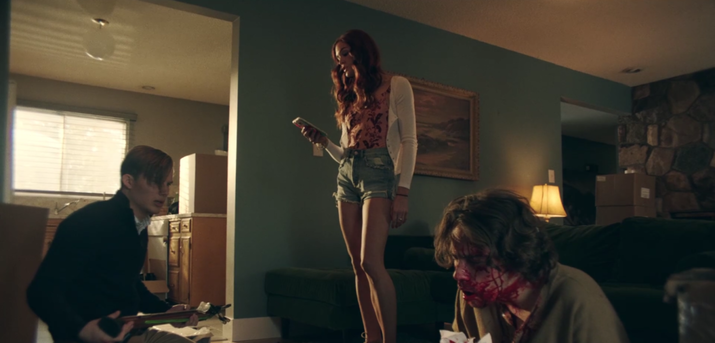
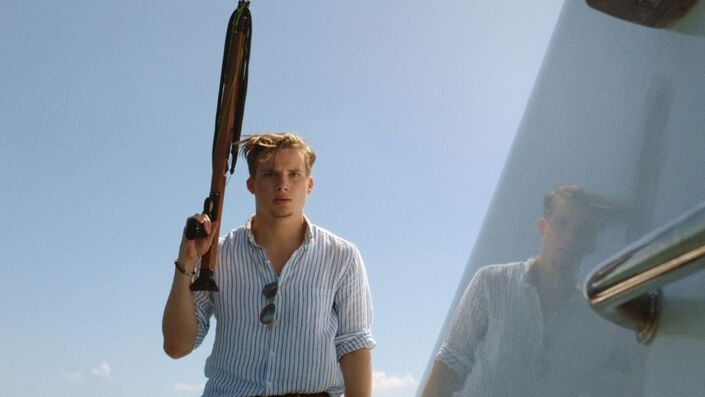
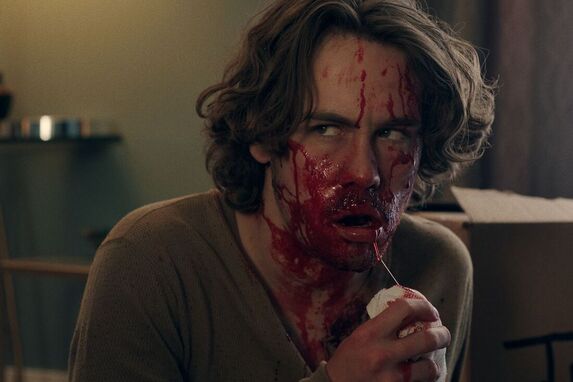
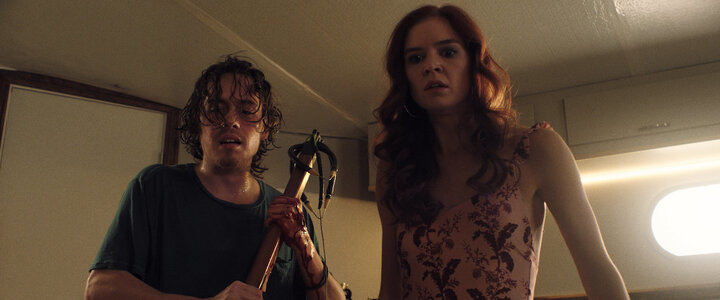
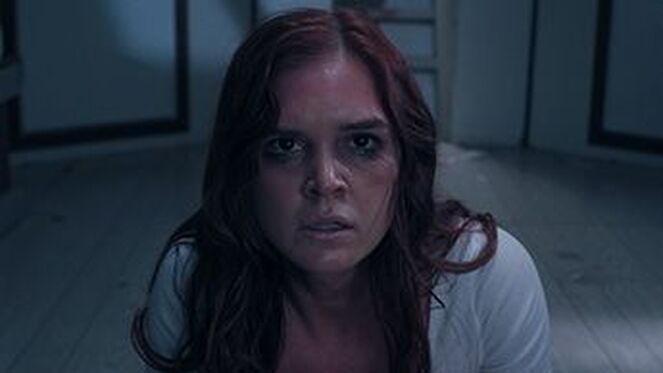
 RSS Feed
RSS Feed